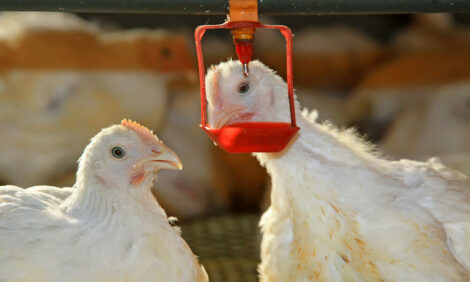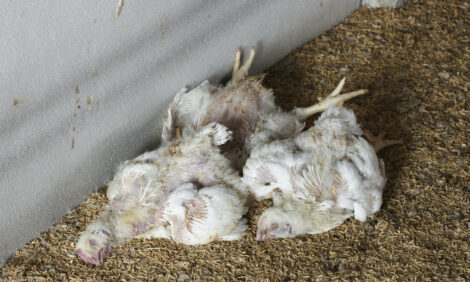



VLA: Colisepticaemia Caused Broiler Flock Mortalities
UK - Fowl cholera was found in a free-range layer flock and poultry meat flocks were hit by transmissible viral proventriculitis, blackhead and colisepticaemia, according to the Veterinary Laboratories Agency (VLA) Monthly Scanning Surveillance Report for January 2011.Commercial Layers and Layer Breeders
Fowl cholera
Fowl cholera was diagnosed in a flock of 43-week-old free-range layer hens submitted with a history of protracted mortality and failure to attain peak of egg production followed by a slight drop in production. Post mortem examination revealed lesions of septicaemia with acute to chronic egg peritonitis. Profuse mixed growth of Pasteurella multocida and E. coli were cultured from spleen and liver samples.
Broilers and Broiler Breeders
Suspected viral proventriculitis
Proventricular lesions with histological correlates similar to those described in cases of so-called transmissible viral proventriculitis were seen in 24-day-old broilers with a history of poor growth. Post mortem examination was unremarkable other than a mild rickets in some birds with slight reduction of bone strength and enlargement of parathyroid glands. Histological examination of several tissues including proventriculus revealed a multifocal lymphocytic proventriculitis with glandular degeneration and ductular hypertrophy and hyperplasia.
The cause of this condition is still under investigation. While work carried out in the United States has implicated a novel birnavirus, antigenically and genetically distinct from the birnavirus causing infectious bursal disease (Gumboro disease) with the condition, recent work in Spain has suggested the possibility that IBDV itself may be implicated by demonstrating good labelling of TVP-like lesions with monoclonal antibodies to IBDV protein VPX (Grau-Roma et al., 2010).
Blackhead
Typhlitis due to Histomonas sp. infection was diagnosed in a flock of 26-week-old birds submitted with a history of slight increase in mortality over a two-week period and a stall in egg production. Post mortem examination revealed distension of caecal wall with mucosal necrosis, extensive haemorrhage and a luminal cast of necrotic and caseous material. Histology of caecal sections confirmed lesions consistent with histomoniasis. There was no evidence of liver involvement in this case.
Colisepticaemia
Higher than expected mortality was reported in four of eight houses of broilers on a site of 100,000 birds. Three-day-old chicks from one house of 13,000 were submitted where there had been mortality of 220 a day. A variety of gross changes were seen, with umbilical inflammation, splenic enlargement, pericarditis, and variable quantities of food in the intestinal tract. Colisepticaemia was diagnosed following isolation of coliform bacteria from visceral samples.
Further Reading
| - | You can view the full report by clicking here. |
Further Reading
| |
- | Find out more information on the diseases mentioned in this article by clicking here. |









